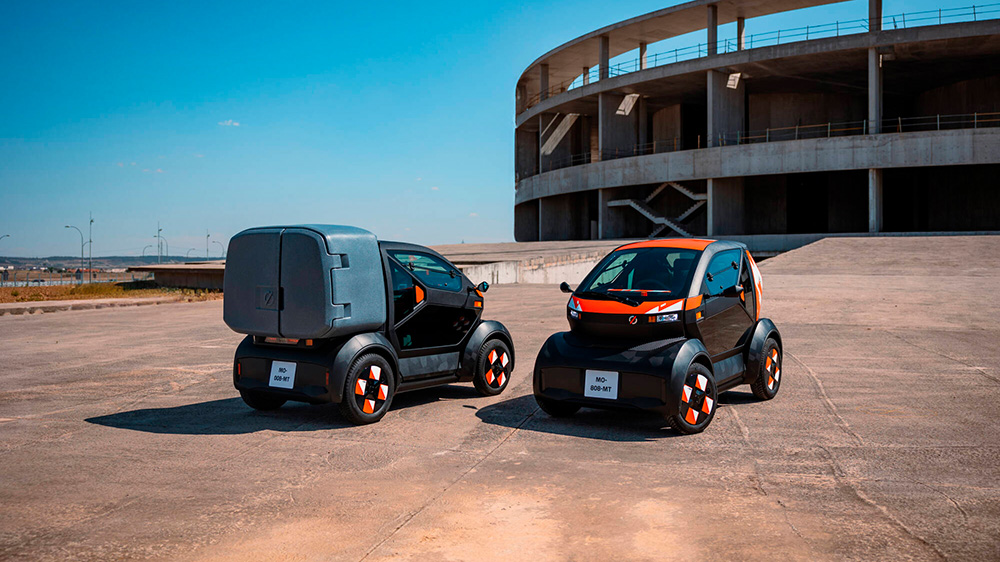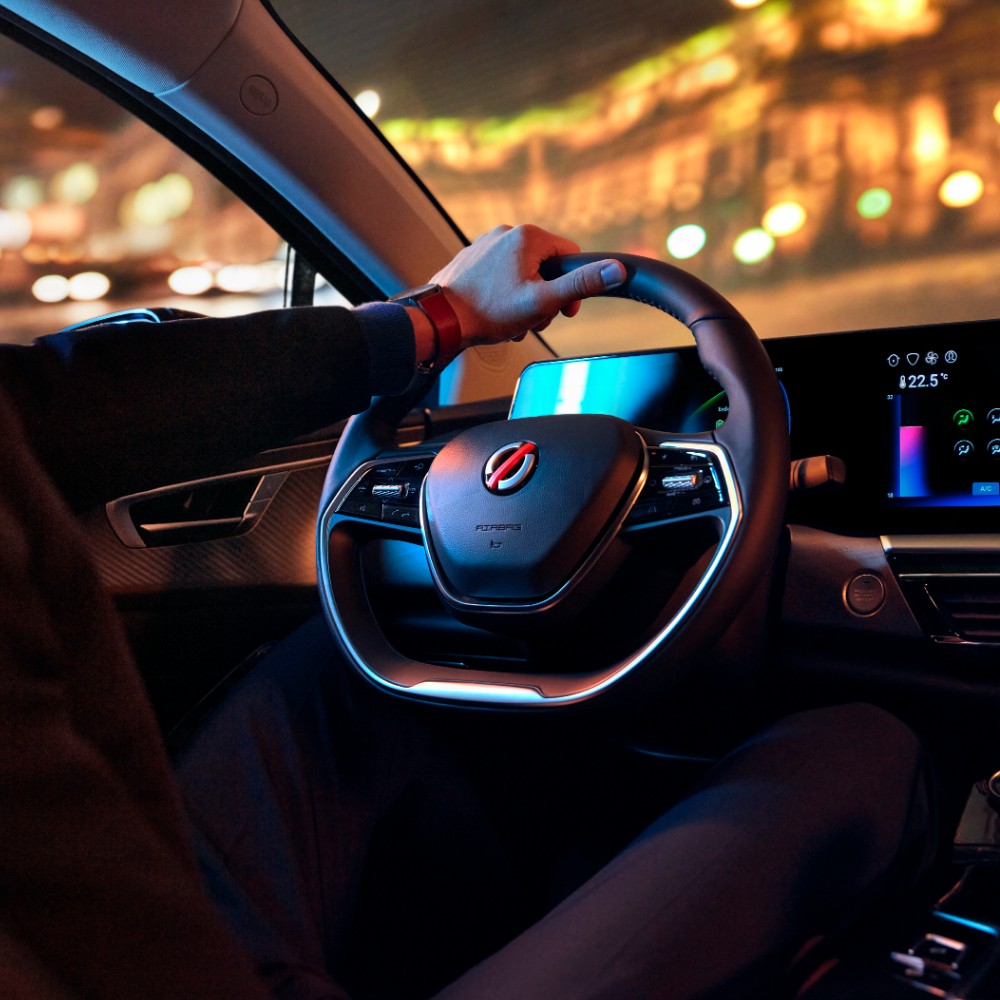Current challenges require from us an optimization of the resources that we have at our disposal. At the top of the list: professional vehicles, the use of which can be greatly improved. In this context, business leaders have access to new partners who help them find new uses for their fleets. What are the major trends in terms of this mobility, facing environmental issues and different needs in the professional field ?
Virginie Boutueil, Deputy Director of the Laboratoire Ville Mobilité Transport (Ecole des Ponts ParisTech), and Guillaume Naegelen, Head of Mobilize Share at Mobilize, explore with you the new habits of these multimodal employees.
Intervention of Virginie Boutueil, Deputy Director of the Laboratoire Ville Mobilité Transport (Ecole des Ponts ParisTech):
What are the main trends in professional mobility?
If we focus more specifically on the question of corporate car fleets, there are some major issues to be positioned and this can be done, for example, on the French scale, which is an interesting case study. In France, company car fleets represent about 15%-16% of the total fleet of light vehicles, i.e. the total fleet in circulation, but when we say that, we must not forget that insofar as these vehicles are used particularly intensively compared to other vehicles owned by households, for example, these 15%-16% of the fleet become 25% of the kilometres travelled by light vehicles and 25%-30% of the greenhouse gas emissions of the fleet of light vehicles in circulation in France.
In fact, we are dealing with a fleet with significant environmental and energy impacts. We are also dealing with a fleet with significant social impacts. Insofar as these mobilities are intensive, there are problems of accidentology, travel safety, fatigue for the employees concerned and, finally, there are major economic impacts because in a large number of companies, and in particular large companies, but not only, mobility and car fleets in mobility represent the third largest item of expenditure after salaries and property.
These companies have perceived the changes taking place in terms of regulations and then the changes caused by climate change and the public health problems associated with local pollution. Companies positioned themselves quite early on to diversify the motorisation of their fleets, notably by introducing electric vehicles into their fleets, but also other types of motorisation: natural gas vehicles, more recently and to a more limited extent hydrogen, etc.
We are dealing with fleets that are renewed relatively quickly compared to the fleets of French households and therefore, for the public authorities, these are fleets that are interesting because they constitute a lever for the dissemination of these innovations, namely electric vehicles and other vehicles with alternative engines, in the wider French car fleet, i.e. these are vehicles that, after having been used for two, three or four years by companies, will find themselves on the second-hand vehicle market and therefore, at the disposal of French households in particular, and therefore, will facilitate the dissemination of these vehicles among French households.
Why is it important to highlight occupational categories when talking about mobility?
Work-related mobility, in general, is an important part of our daily mobility. To talk about home-to-work mobility alone, home-to-work mobility represents just over 20% of total travel in France. Three quarters of these journeys are made by car, and so we are dealing with a significant part of the environmental and energy challenges of transport.
When we carried out a study a few years ago on “What was the typical profile of households equipped with company cars in Île-de-France? for example, we realised that the most represented household profile was a high-income household, a multi-motorised household, a household living in an urban area, and a household with a head aged between 35 and 55.
This being said, what we must not overlook is that 40%, i.e. almost half of the households equipped with company cars in the Ile-de-France region, are households of intermediate or working class socio-professional category. And here, we have another profile, if I may say so, of company vehicles which is emerging, which is that of the vehicle of the maintenance technician, the building worker, the sales representative, the tool vehicle which, of course, in certain cases, can be used for home-work journeys and can, in certain cases, also be used for private mobility, but in a much more limited way than for the company vehicle I was talking about at the beginning, that is to say, the vehicle of the manager or the upper socio-professional categories.
Keeping in mind the diversity of the professions and socio-professional categories concerned by these company cars allows us to avoid a certain number of shortcuts concerning the use made of them, concerning the possibility of switching to other means of transport for the people concerned.
What about companies that provide cars to their employees today?
There are changes. There are changes of various kinds, if I may say so. Especially in times of crisis, but even before the current crisis in energy prices, in global trade, companies had undertaken to rationalise the costs associated with their fleets. Rationalisation meant both, in terms of company vehicles, trying to reduce ‘car policies’ to more reasonable levels in terms of, for example, vehicle size and emissions, with significant gains in terms of taxation for the companies concerned.
There were also efforts to rationalise the fleet of service vehicles, with, in particular, the beginnings of pooling of vehicles which, beforehand, were perhaps more directly assigned to a particular department or unit. Pooling, or even internal company car-sharing. These are developments that we have been seeing for about ten years in France and which are accelerating.
There are other developments, in particular the introduction, and here again in an accelerated way over the last few years, of vehicles with alternative engines, in particular to reduce the operating costs, i.e. some of these vehicles can represent higher investment costs for the companies, but companies, when they allocate them to the appropriate uses, can find themselves financially better off by acquiring more expensive vehicles, because the operating costs, and in particular the energy costs, but not only the insurance costs, the maintenance costs are more advantageous.
As we know, the digital revolution is largely transforming mobility. For your part, have you observed many new uses thanks to new mobilities and new services?
The changes underway in professional mobility must be seen in the broader context of changes in everyday mobility in France, Europe and the world. One of the transformations at work is the multiplication of digital platforms for shared mobility, particularly shared mobility services, whether they be taxis, VTCs, car-sharing services, carpooling services, and therefore trip-sharing services, backed up by smartphone applications, for example.
The City Mobility Transport Laboratory has set up a global observatory of digital shared mobility platforms which shows that in three years, simply by looking at 2019-2021, the number of these digital shared mobility platforms in the world has tripled. This is a phenomenon led by Europe and the United States, but in which the major emerging countries play a very important role and in which a lot of developing countries are also involved.
What is interesting is that beyond the somewhat traditional shared mobility services that I have just mentioned: taxi, VTC, vehicle sharing, whether car, bicycle, scooter, etc., what we have seen developing more rapidly in the last few years is car sharing, on the one hand, but also the services that the Americans call “alternative transport services”.
This means “alternative transport services to public transport”, i.e. transport on demand, shuttle services with a quality of service that has been greatly improved by the use of digital applications and that make new developments possible in terms of mobility to get to work in the morning, to get to clients during the day, etc., including in areas where public transport with capacity: the RER, the metro and even the bus, do not make sense because they would not have sufficient capacity.
In these segments of mobility services: transport on demand, transport by shuttle, shared taxi, mini-bus taxi, which are very fast-growing segments in a number of developing countries, in particular, we could see interesting and favourable developments in our developed countries, in cities and in the countryside, as a result of these new applications.
Intervention of Guillaume Naegelen, Head of Mobilize Share at Mobilize:
The transformation of the mobility sector is a fact, but would you say that it is linked to changes in consumer expectations
This evolution comes from both and finally, if we look at it a little, there are four major factors that we have been able to identify that are changing the way we consume mobility. The first is the environmental factor, where we clearly realise that people are increasingly sensitive to this issue, both the general public and companies, which are increasingly being asked to decarbonise their employees’ journeys. We could mention, for example, the mobility plan, which is the former company travel plan.
Another factor which is making this mobility evolve is the societal factor, in particular, which we can see through Covid, which has led to the emergence of teleworking and therefore, has created alternating rhythms between presence at home and presence in the workplace. If we look at a little bit here, there is a TraCov survey which was carried out in France which shows that in 2019, about 4% of workers will be teleworking and then, in 2021, we will reach 27%. These are years that have been somewhat disrupted by Covid, so it will be interesting to see how the figures evolve, but in any case, there is a long-term trend.
Another important factor is the economic factor. As a general rule, everyone looks at the cost of travel, including individuals, and this was very well illustrated in the previous podcast, which showed that the cost of travel is a major factor in the choice of mobility. This economic factor can also be found within companies, and it remains an important PI case for a fleet manager to control and optimise the cost of employee travel.
Then, the last point is the technological factor. Today, the smartphone is everywhere. We use it to communicate, we use it to make purchases, we use it to use public transport, we use it to get information. Once again, there is this trend of “everything, immediately, everywhere”. In particular, we see the concept of “ATAWAD”, which stands for “Any time, anywhere, any device”, which I think reflects quite well the way in which we use these digital tools, i.e. anytime, anywhere and on any device, i.e. with our phone, with our computer. In any case, technology is clearly part of the way we live from now on and therefore we have to adapt to these factors, adapt our offers to meet these different needs and this evolution of mobility.
To what extent is this transformation also accelerated by environmental concerns?
This environmental factor is preponderant and at Mobilize, in any case, we are completely convinced of this, more than a conviction, that it is a necessity, in the end. The genesis of the creation of this brand is to be an activist brand that wants to play a role in optimising the carbon impact of our travel by bringing together the best of technology, engineering, design and finance to offer a more sustainable mobility.
This environmental factor is very important and when we talk to our clients, in this case companies, who also have these mobility problems, we realise that we are clearly in the same situation. Companies have a double objective today, which is to reduce the carbon impact of travel, and this desire is also being pushed by the public authorities, and at the same time to optimise the costs of this travel. Of course, this switch to electric vehicles and to optimising their use will raise a lot of questions: questions about recharging, questions about the installation of charging stations, questions about car-sharing technologies, etc., and that’s where we want to position ourselves to help companies in this transition, through solutions that are adapted to their own context.
In this episode we talk about migratory employees, i.e. people who work using several modes of transport. Do you think this could be more than a trend?
Clearly, yes. As we were saying, Covid has changed the way we work and the way we travel. Today, I think there is still a balance to be found. We can see, moreover, that there is quite a lot of heterogeneity in the way telework is done in Europe. If we look at the figures, I came across a Eurostat statistic which shows that in 2020, a disturbed year because we had two phases of confinement, but nevertheless, in 2020, on one side of the spectrum we had the UK which had about 5% of its population teleworking and then, on the other side, Finland which had 25% of its population teleworking.
We realise that there is quite a lot of heterogeneity within countries, which pushes us to propose flexible solutions and in any case, which will allow us to adapt to the contexts in which we deploy them. Besides that, telework has brought a lot of positive points which suggest that it is much more than a trend. Some of these include a better life/life balance, spending less time in transport, more time with family or simply being able to live further away.
This private life/life balance, we also see that the periods of confinement, they have finally shown that telework works. There is an institute, the Sapiens Institute, which carried out a study in 2020, which shows that the teleworking phases have enabled an increase of 22% in productivity. Once again, this was a rather exceptional year, so I don’t know if we should take these figures as they are, but in any case, we realise that telework works and this is a rather positive point of these periods.
This trend of telework is a fundamental one, in the sense that it is in everyone’s interest, but also in the interest of companies which will be able, for example, to reduce the amount of land they have in their buildings, with people alternating between time spent in the office and time spent at home. They will also be able to increase their attractiveness in terms of human resources, by recruiting people who live further away. Teleworking now allows people to live much further away from their place of work. It is really the idea of saying that there is both an interest from the point of view of employees and also an interest from the point of view of companies, a sort of win-win situation which suggests that this is a phenomenon which will last for a long time. It has yet to find its balance, but it is more than a passing trend.
How can Mobilize respond to these new mobility challenges?
I would say in several ways. Generally speaking, by being present on the entire value chain, to be able to offer solutions that are complete and packaged, i.e. for a company, electrified vehicles, accompanied by the installation of charging stations, accompanied by roaming charging solutions, vehicles that can also be… We were talking about electric vehicles, but vehicles that can also be adapted to different types of use and vehicle sharing solutions, what we could call corporate car sharing, which will allow employees to share a vehicle.
Perhaps more specifically, with Mobilize Share. Mobilize Share, which, in a few words, is one of the mobility solutions deployed by Mobilize and operated by the dealer network. Today, there are about 1,000 dealerships in nearly 10 countries, with just over 16,000 vehicles. Here, we rely on the dealer network which, in addition to being a local player, who knows its environment, will be able to adapt the mobility offers according to this context and the needs which are identified on its territory, both for private individuals and professionals.
It is really by being in contact with these local companies that it will be able to adapt the solution to the needs of that company. Today we talk much more about multimodality, i.e.: is it still relevant to have a vehicle, when our mobility needs vary between, sometimes, a utility vehicle, sometimes a private vehicle, sometimes a city car, sometimes a vehicle that is more road-oriented and then, sometimes for a few hours, or even a few days, or even a few weeks? This is where we really realise that we need to adapt our solutions to the local context, so who better to do this than the dealer, who is spread across the territory and knows the specificities of this local context?
When a company uses Mobilize Share to share its pool of vehicles with its employees, the employee will use this application to reserve his vehicle for private or professional use, and the employee will use the same application if he wishes to use vehicles located, for example, at Nice station, to continue his professional journey. In other words, they have the choice of either taking vehicles located within their company or using multimodality and travelling by train to their destination and finishing their journey using a Mobilize Share vehicle, which will be the same application, once again, as the one they use for their company vehicles, to complete their journey and go to their client’s home or destination.
What about projects abroad?
Today, Mobilize is already a brand of the international Renault group. If I take the example of Mobilize Share, which we talked about, as I said, it is deployed in nearly 10 countries, and about 1,000 dealers are currently using or deploying this solution on their territory. We are mainly present in Europe, in Latin America, with Colombia and Brazil.
If I take the example of Brazil, Renault Brazil began in 2019 to deploy car-sharing solutions through this Mobilize Share solution, initially for its employees, for professional use, and quickly realised that there was a particular desire to deploy this use on a personal basis as well, i.e. in the evening, at the weekend, when these vehicles are not used for professional needs.
Very quickly, there was a strong interest with a distribution of use which was intended to be 50/50 between professional and personal use and finally, Brazil used its personal experience through the Renault employees to propose this solution to other companies. Today, more than 1,400 employees use this solution and it contributes to what we said at the beginning, the work/life balance and to having solutions which are complete and which will allow, afterwards, to optimise the rate of use of these vehicles. Because for the company, when these vehicles are not used for professional purposes, being able to rent them to its employees contributes to the optimisation of the cost that it is looking for, it contributes, of course, to the comfort of the employee and it contributes to putting more people in one and the same car, so it also has an environmental impact, somewhere.
This is the end of this episode, thank you Virginie Bouteuil and Guillaume Naegelen for sharing your vision with us. Thank you for following us and see you soon for new episodes of Open World with Mobilize and Usbek & Rica.





